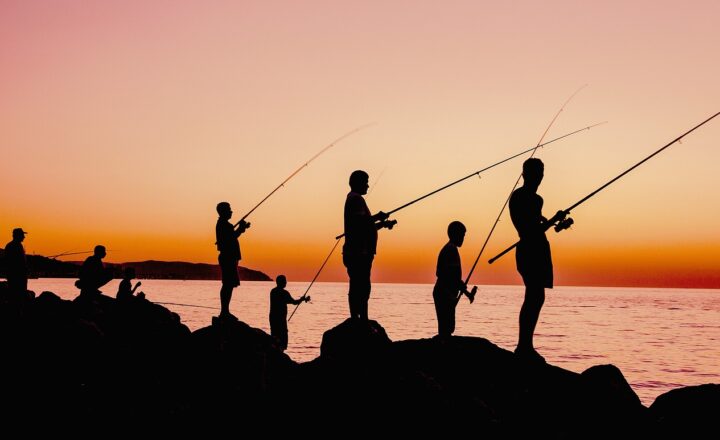How Commercial Fishing Fleets Operate and What It’s Like Working on a Boat
November 12, 2024

Commercial fishing is much more than just casting a line into the water; it is a complex industry with intricate operational processes that take place far from shore. Understanding how commercial fishing fleets operate, and the realities of working on a fishing boat, provides valuable insight into one of the oldest trades still practiced across the globe.
1. The Structure of Commercial Fishing Fleets
Commercial fishing fleets consist of various types of boats that vary in size and purpose. These fleets can be categorized into several types:
- Trawlers: Large boats that drag nets through the water to catch fish. They are efficient and can cover vast areas of the ocean.
- Longliners: These boats use long lines with baited hooks that can stretch for miles, targeting specific species like tuna and swordfish.
- Purse seiners: Boats that encircle schools of fish with a large net called a purse seine, trapping them for easy capture.
- Drift nets: Used to let nets drift freely, trapping fish as they swim into them. Although controversial due to bycatch issues, they are still in use in some areas.
- Gillnetters: Employ nets that entangle fish by their gills, allowing fishermen to catch multiple species at once.
These varied vessels operate under different strategies and target different species, affecting their operational tactics, fishing gear, and fishing durations.
2. Typical Operations of a Commercial Fishing Fleet
The operation of a commercial fishing fleet involves meticulous planning and execution. Here’s a breakdown of the typical processes involved:
Preparation to Depart
Before heading out, the crew must conduct a thorough inspection of the vessel. They check all equipment, including fishing gear, navigation systems, and safety equipment. This ensures everything is in working order and that safety protocols are in place.
Finding the Right Location
Using sonar and GPS technology, boats identify fish-rich areas to target. Data on ocean currents, water temperature, and past catches help crews plan their journeys, minimizing fuel costs while maximizing catch efficiency.
The Fishing Process
Once a suitable location is found, the crew sets up nets or lines, dependent on the method of fishing. This can be a labor-intensive process, often requiring significant teamwork. Depending on the type of fishing, this entailing:
- Deploying nets:
- Baiting hooks for longlines:
- Monitoring sonar for fish activity:
The duration of the fishing period can vary from hours to several days, often requiring crews to work in challenging conditions.
3. Life on Board a Fishing Boat
Working on a fishing boat can be both rewarding and challenging. Here’s a glimpse into life on board:
Work Schedules
Fishing operations are typically exhausting. Crews often work long hours—16-hour shifts are not uncommon. Because fish are more active at certain times of day, fishermen may fish during early morning hours or late at night, requiring adaptability and stamina.
Crew Dynamics
Crew members typically develop strong bonds due to the close quarters and shared tasks. This camaraderie is important for team morale, especially during challenging weather or long fishing trips. Life on a boat fosters a unique sense of community, essential for maintaining a positive work environment.
Health and Safety Considerations
Safety is a paramount concern on fishing boats. Crew members must be trained in safety protocols, including:
- Emergency procedures to handle accidents or equipment failures.
- Proper handling of tools and machinery to avoid injury.
- Knowing how to prepare for adverse weather conditions.
The risk of accidents is higher in this line of work, which is a vital consideration for all crew members.
4. The Environmental Impact of Commercial Fishing
As vital as commercial fishing is to economies around the world, it has its environmental implications. Overfishing and bycatch (the unintended capture of non-target species) concern marine conservationists. Here are a few key impacts:
Overfishing
Overfishing can deplete stock levels, causing long-term damage to marine ecosystems and leading to the endangerment of certain species. Regulatory bodies and sustainable fishing practices aim to mitigate this by setting limits on catch amounts and employing careful monitoring.
Bycatch Issues
Bycatch contributes to the loss of non-target species and creates imbalances in marine ecosystems. Efforts to reduce bycatch include modifying fishing gear to minimize unintended catches and encouraging the use of targeted fishing methods.
Sustainable Practices
Transitioning towards more sustainable fishing practices can significantly mitigate environmental impacts. This includes:
- Implementing catch quotas to prevent overfishing.
- Using technology for better fishing management.
- Promoting aquaculture as a sustainable source of seafood.
Bringing together the fishing industry, conservationists, and regulators can lead to healthier oceans and sustainable livelihoods for fishermen.
5. Conclusion: The Future of Commercial Fishing
The future of commercial fishing involves balancing economic needs with ecological sustainability. As we consider the ongoing challenges posed by climate change and overfishing, it becomes clear that improved practices and innovative technologies will be essential for the fishing industry to thrive and adapt. For those who choose to embark on a career at sea, the allure of adventure, community, and the satisfaction of bringing fresh seafood to tables around the world remains at the heart of commercial fishing.
Ultimately, both the realities of working on a boat and the understanding of fishing fleet operations enrich our appreciation for this age-old trade—one that continues to evolve while remaining vital to global food supplies and economies.







